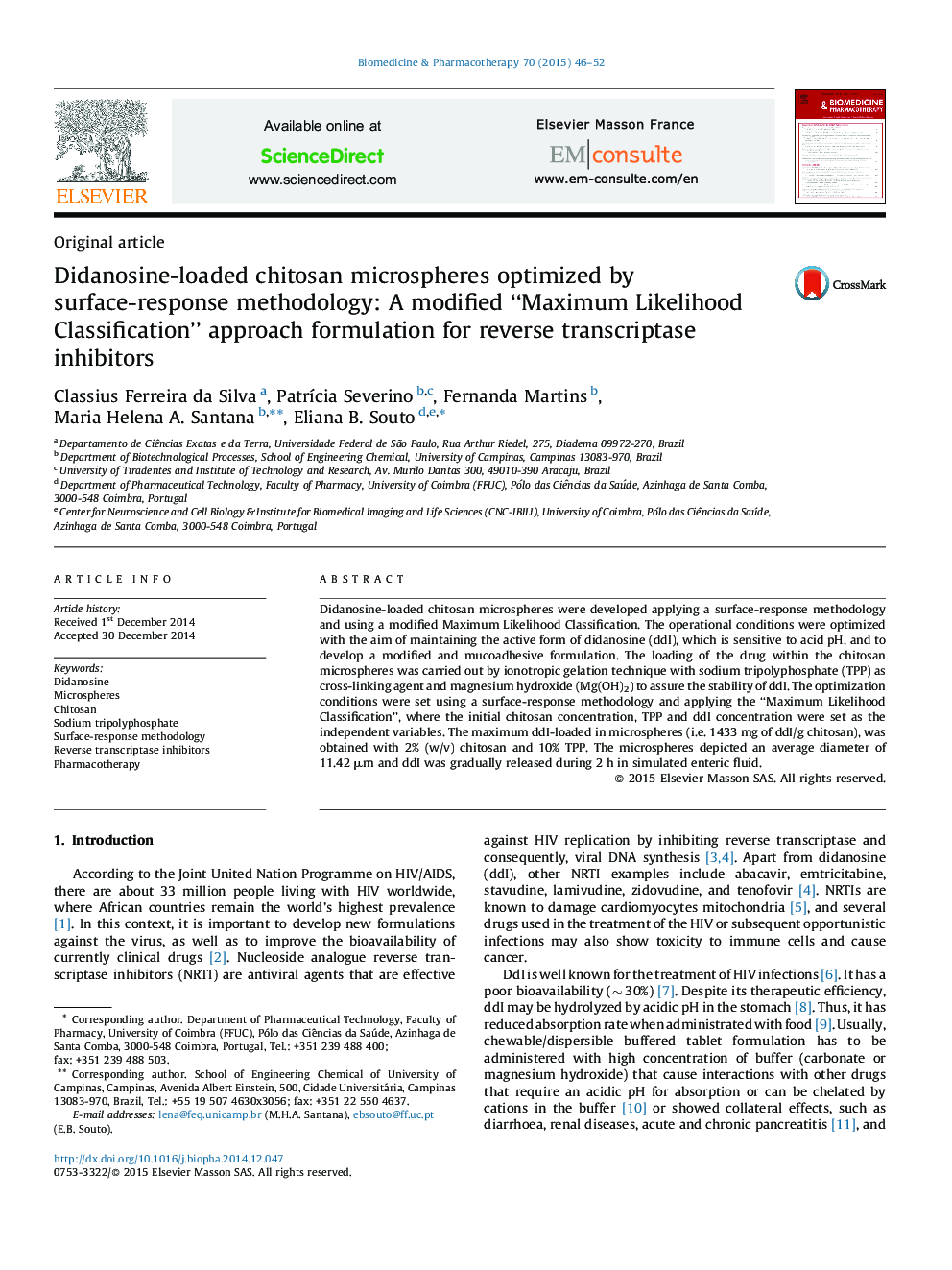| Article ID | Journal | Published Year | Pages | File Type |
|---|---|---|---|---|
| 2523985 | Biomedicine & Pharmacotherapy | 2015 | 7 Pages |
Didanosine-loaded chitosan microspheres were developed applying a surface-response methodology and using a modified Maximum Likelihood Classification. The operational conditions were optimized with the aim of maintaining the active form of didanosine (ddI), which is sensitive to acid pH, and to develop a modified and mucoadhesive formulation. The loading of the drug within the chitosan microspheres was carried out by ionotropic gelation technique with sodium tripolyphosphate (TPP) as cross-linking agent and magnesium hydroxide (Mg(OH)2) to assure the stability of ddI. The optimization conditions were set using a surface-response methodology and applying the “Maximum Likelihood Classification”, where the initial chitosan concentration, TPP and ddI concentration were set as the independent variables. The maximum ddI-loaded in microspheres (i.e. 1433 mg of ddI/g chitosan), was obtained with 2% (w/v) chitosan and 10% TPP. The microspheres depicted an average diameter of 11.42 μm and ddI was gradually released during 2 h in simulated enteric fluid.
